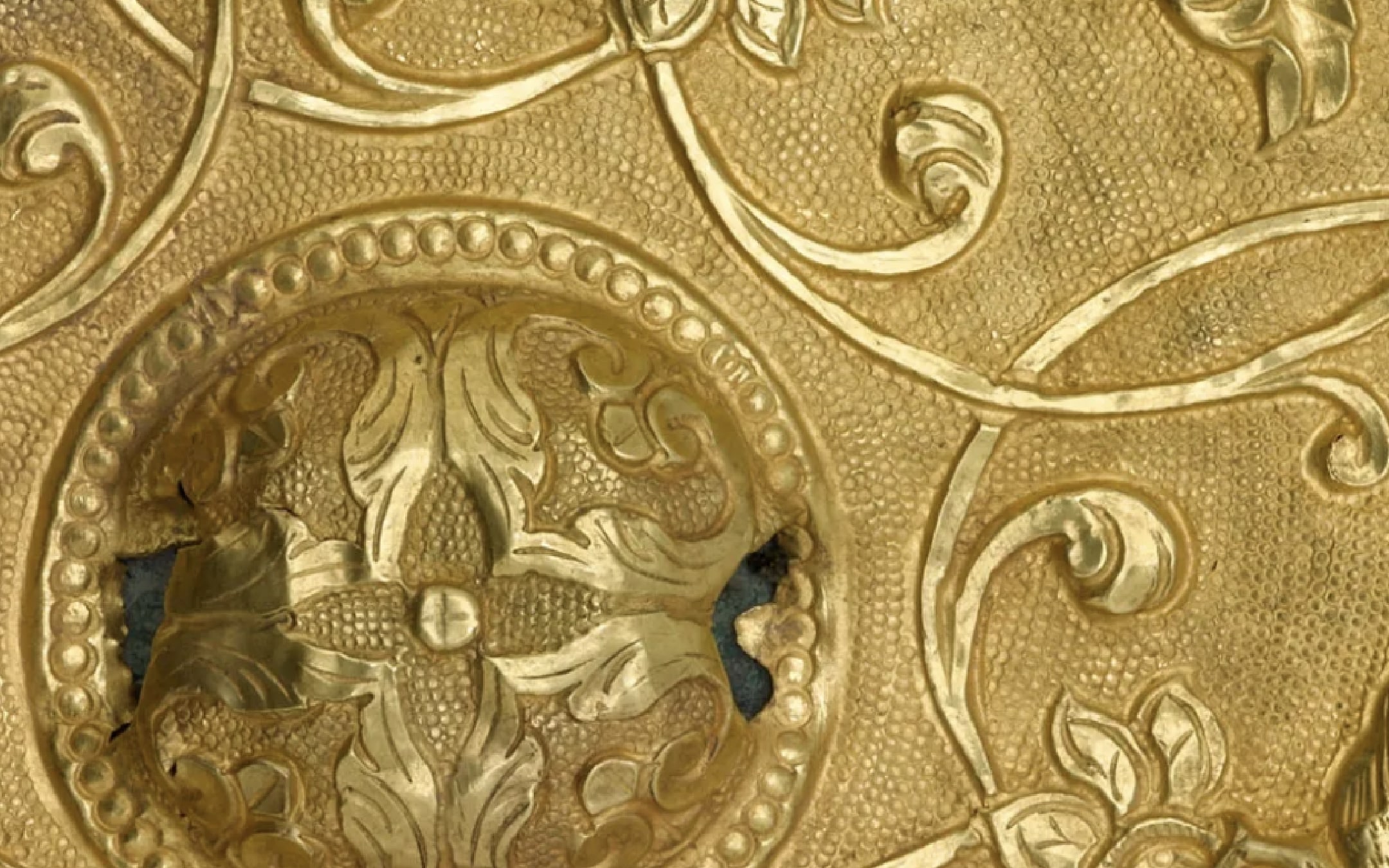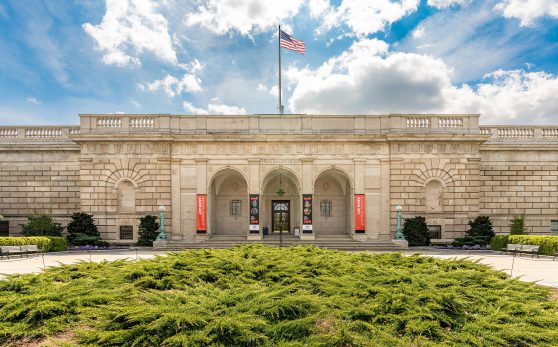
The Smithsonian’s National Museum of Asian Art has announced its new board chair: Purna R. Saggurti, vice chair of Bank of America and chairman of Global Corporate and Investment Banking. Saggurti will lead the board of trustees at a pivotal moment as the museum celebrates its centennial and enters its second century.
“I am excited to work closely with Purna in this new role, and I’m grateful for his support of our museum,” said the National Museum of Asian Art’s director Chase F. Robinson. “Purna’s leadership comes at a critical time for our institution, as we continue our transformation into a global resource for understanding Asian arts and cultures and their intersection with America.”
Saggurti will be supported by the new vice chair Carolyn Brehm, founder and CEO of Brehm Global Ventures LLC. Additionally, retired U.S. diplomat Pamela Hyde Smith will continue as secretary. Janine Luke, president of Silbanc Properties, will be returning as a trustee.
“I am grateful to have such a strong group of trustees to usher the National Museum of Asian Art into a new era,” Saggurti said. “The centennial celebrations, where Bank of America was a Presenting Sponsor, has been an exciting way to begin the museum’s second century. I am pleased to have the opportunity to lead more innovative initiatives.”
Trustees serve for four-year terms. The Smithsonian’s Board of Regents approved the board appointments, effective Oct. 27. The 17-member Board of Regents, consisting of the Chief Justice of the United States, the Vice President of the United States, three members of the U.S. Senate, three members of the U.S. House of Representatives, and nine citizens, is responsible for the administration of the Smithsonian.
Officers serve for two-year terms.
About the Appointees
Carolyn Brehm, Washington, D.C., is the founder and CEO of Brehm Global Ventures LLC. Brehm is a retired corporate executive and lecturer with more than 40 years of experience in global government relations, public policy and international business. She worked at two Fortune 100 companies and several non-profits and business associations over the course of her career in Washington and Asia. She advises clients on commercial advocacy, government affairs, public policy and political risk.
Brehm retired in 2017 from The Procter & Gamble Co. as vice president for global government relations and public policy where she created and led P&G’s team of 60 government relations practitioners based in key markets across the globe. She was responsible for public policy and legislative advocacy to protect and grow P&G’s business, advising four company chairmen and CEOs over her 17 years there.
During a 13-year stint with General Motors Corp., Brehm served as chief international lobbyist in Washington and in business expansion roles in Shanghai and Hong Kong. She led Asia operations in Hong Kong for ORBIS International, a global NGO working to eliminate avoidable blindness.
She currently chairs the board of global health NGO Population Services International and is a trustee of the Smithsonian’s National Museum of Asian Art. She also sits on the board of governors at the University of New Haven and the board of advisors of Georgetown University’s Institute for the Study of Diplomacy. She has taught as an adjunct professor at Georgetown University and University of Michigan and is a regular lecturer for the Washington campus.
Brehm is a 1977 graduate of Georgetown University’s Walsh School of Foreign Service with a concentration in Asian studies and holds a Master of Business Administration in international business from the University of New Haven’s program in Nicosia, Cyprus. She was an AFS International exchange student in Mumbai, India, in 1972. Brehm speaks Mandarin and has studied French.
Janine Luke, New York City, is the president of Silbanc Properties, a private real estate company. From 1978 to 2012, Luke was the sole owner of Shepherd Management Corp. in New York, a non-registered investment advisory firm specializing in family and individual portfolios. She was previously the director of Windrove Service Corp. in New York, an investment advisory firm, from 1980 to 2012. She is a trustee of the Children’s Aid Society, a director of the American Friends of the Shanghai Museum, the Center for Plant Conservation, the Charleston Library Society and the Master Drawings Association.
Purna R. Saggurti, New York City and Warren, New Jersey, is vice chair of the Bank of America and chairman of Global Corporate and Investment Banking. Prior to his current role, Saggurti served as the co-head of Global Corporate and Investment Banking.
Saggurti is a member of the management committee of Bank of America. He was on the board of the Environmental, Social and Governance Committee and was previously vice chairman of the Global Diversity and Inclusion Council for the bank.
Prior to Bank of America acquiring Merrill Lynch, Saggurti was head of Americas at Merrill Lynch, which included all investment banking coverage, mergers and acquisitions, and capital markets origination in the U.S., Canada and Latin America.
Saggurti is currently a member of the executive board of the U.S.-India Strategic Partnership Forum and is a member of the Council on Foreign Relations. Previously, Saggurti was a member of the graduate executive board of The Wharton School, was a member of the board of trustees of the Tennessee Technological University and the former chairman of the board of trustees of the John Whitehead School of Diplomacy and International Relations. He also was co-chairman of the finance committee of the “Sustainable Energy for All” initiative of the World Bank and the United Nations.
Saggurti holds a Bachelor of Technology degree in chemical engineering from Andhra University, a Master of Science degree in chemical engineering from Tennessee Technological University and a Master of Business Administration from The Wharton School.
Pamela Hyde Smith, Washington, D.C., is a former ambassador and retired U.S. diplomat residing in Telluride, Colorado, and Washington. She served during her career in Bucharest, Belgrade, Jakarta, London, Washington and as U.S. ambassador to Moldova. Subsequently she led inspections of U.S. embassies and Washington operations for the Department of State’s inspector general.
Prior to joining the Foreign Service, she worked in graphic design and public relations. From 2003 through 2007, Smith taught courses on public diplomacy at Georgetown University’s School of Foreign Service, both at the master’s and the undergraduate degree levels. From 2014 to 2020, she volunteered as a docent at the Smithsonian’s National Museum of Asian Art.
Smith has served on the board of the National Museum of Asian Art since 2019. She also serves on the boards of Georgetown University’s Institute for the Study of Diplomacy and the Maryland/DC Chapter of The Nature Conservancy. She has a Bachelor of Arts in art history from Wellesley College. Her languages are Romanian, Indonesian, Serbo-Croatian and French.
About the Smithsonian’s National Museum of Asian Art
The Smithsonian’s National Museum of Asian Art is committed to preserving, exhibiting, researching and interpreting art in ways that deepen our collective understanding of Asia and the world. Home to more than 46,000 objects, the museum stewards one of North America’s largest and most comprehensive collections of Asian art, with works dating from antiquity to the present from China, Japan, Korea, South Asia, Southeast Asia and the Islamic world. Its rich holdings bring the arts of Asia into direct dialogue with an important collection of 19th- and early 20th-century American works, providing an essential platform for creative collaboration and cultural exchange between the United States, Asia and the Middle East.
Beginning with a 1906 gift that paved the way for the museum’s opening in 1923, the National Museum of Asian Art is a leading resource for visitors, students and scholars in the United States and internationally. Its galleries, laboratories, archives and library are located on the National Mall in Washington, D.C., and are part of the world’s largest museum complex, which typically reports more than 27 million visits each year. The museum is free and open to the public 364 days a year (closed Dec. 25), making its exhibitions, programs, learning opportunities and digital initiatives accessible to global audiences.


